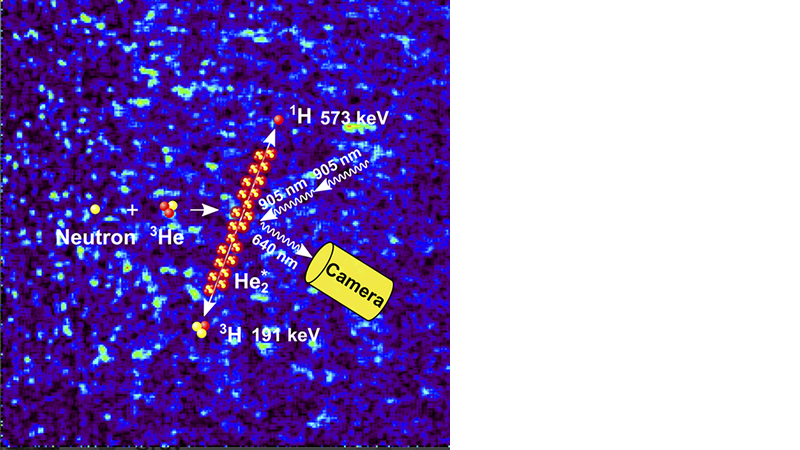UT physicists and colleagues develop novel method for tracking turbulence
June 3, 2020

Anyone who has ever flown is probably familiar with the concept of turbulence. Yet understanding turbulent flow—how it develops, its intensity, and its properties—remains somewhat elusive. UT’s physicists have helped develop a new technique using excimers created by neutron capture to observe turbulence around macroscopic objects (an airplane, for example, or a ship). Their technique enables measurements of how turbulence behaves over space and time, and can be scaled to work in three dimensions. The work was published in Physical Review Letters (PRL) and was designated an Editor’s Suggestion.Finding Nimble Trackers for Turbulent Conditions
In the world of fluid dynamics, laminar flow involves a fluid (a gas or liquid) that flows smoothly in parallel layers. Turbulence occurs when a fluid has something like hiccups: inconsistent speed with irregular fluctuations or mixing between layers. Vortices—where the flow revolves around an axis line—are also much more pronounced in this scenario.
UT Physics Joint Faculty Professor Michael Fitzsimmons is among the researchers who investigated this problem as outlined in the PRL paper. He explained why sorting out turbulence is of interest across disciplines—from transportation to medicine.
“If the flow could be made more laminar about a tanker, or airplane, or through a heart stent, there would be less drag” and more energy efficient, he said.
Scientists have tried to work through this problem before. To develop a model of turbulent flow, they’ve used tracers in liquid helium to measure velocity. Though only a micron or tens of microns in size, these tracers (polymer spheres and frozen hydrogen particles) are actually massive within this context. For reference, a human hair is 50 to 70 microns in diameter. So how could this possibly be too large?
Read more at phys.utk.edu/news.
Related Publication: Wen, X., et.al. (2020). Imaging Fluorescence of He∗2 Excimers Created by Neutron Capture in Liquid Helium II. Physical Review Letters 124(13), 134502. doi.org/10.1103/PhysRevLett.124.134502